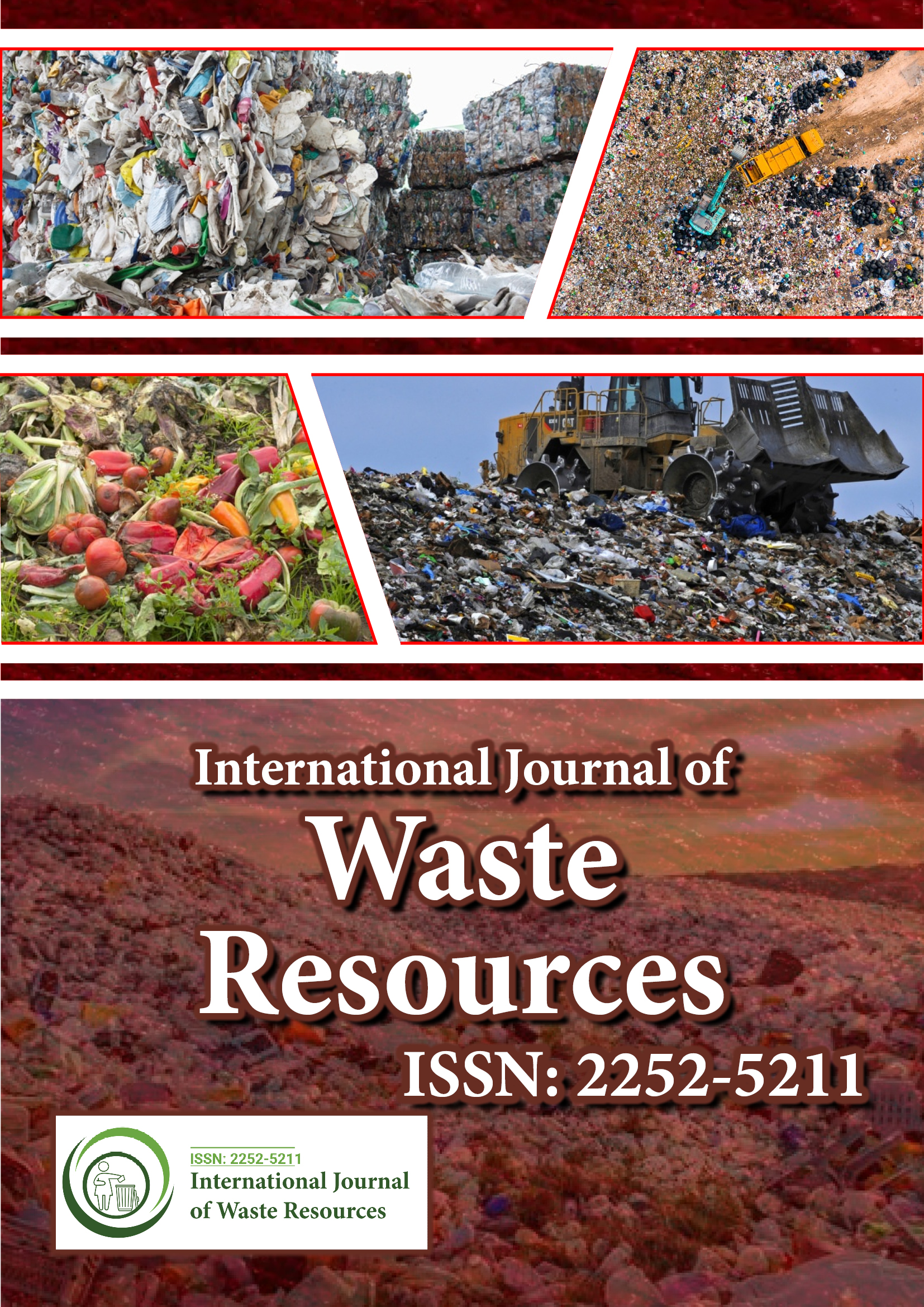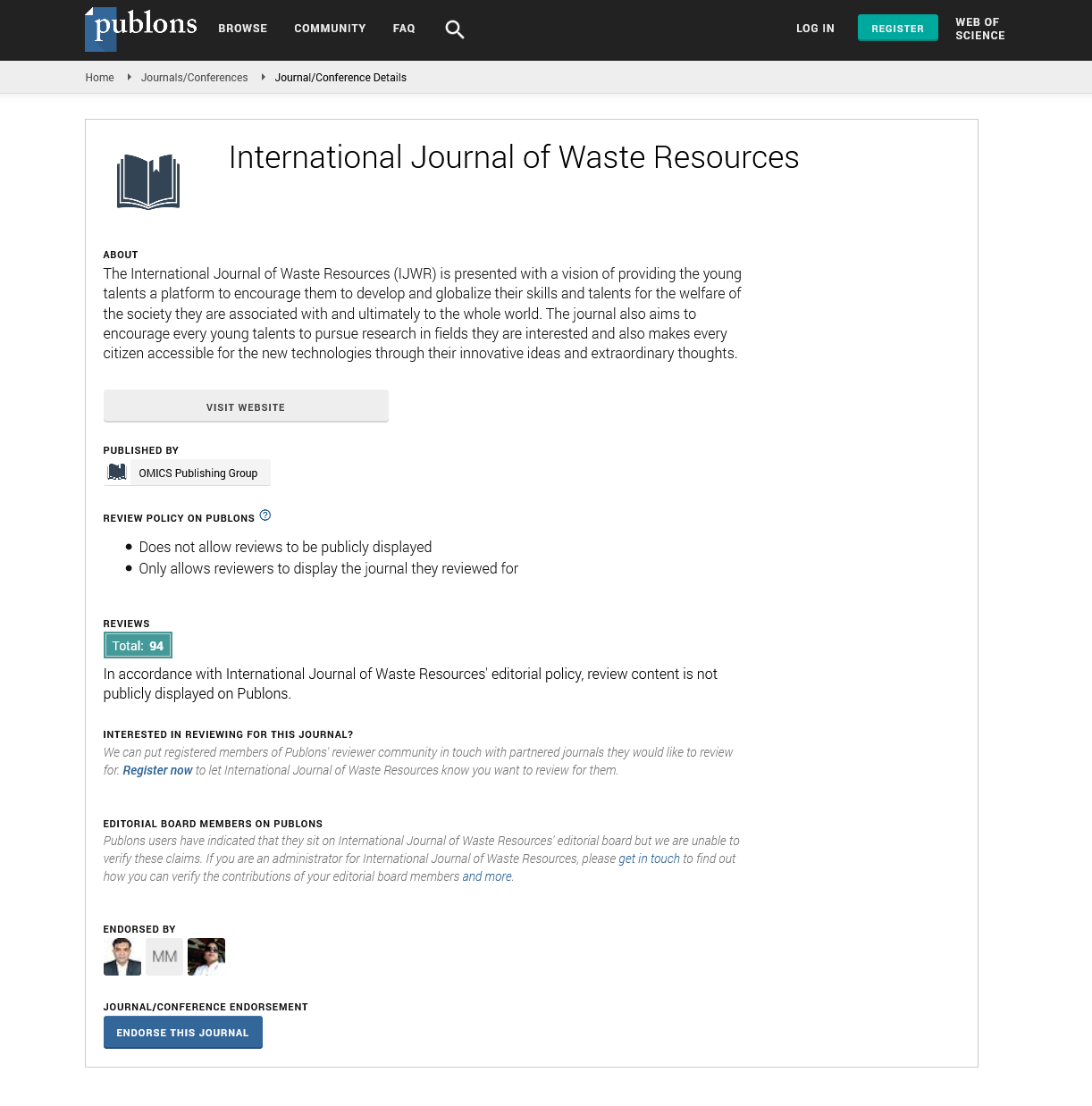Indexed In
- Open J Gate
- The Global Impact Factor (GIF)
- Open Archive Initiative
- VieSearch
- International Society of Universal Research in Sciences
- China National Knowledge Infrastructure (CNKI)
- CiteFactor
- Scimago
- Ulrich's Periodicals Directory
- Electronic Journals Library
- RefSeek
- Directory of Research Journal Indexing (DRJI)
- Hamdard University
- EBSCO A-Z
- Publons
- Google Scholar
Useful Links
Share This Page
Journal Flyer

Open Access Journals
- Agri and Aquaculture
- Biochemistry
- Bioinformatics & Systems Biology
- Business & Management
- Chemistry
- Clinical Sciences
- Engineering
- Food & Nutrition
- General Science
- Genetics & Molecular Biology
- Immunology & Microbiology
- Medical Sciences
- Neuroscience & Psychology
- Nursing & Health Care
- Pharmaceutical Sciences
Perspective - (2024) Volume 14, Issue 4
Regulatory Solutions: Standards and Monitoring for Microplastics
Abigail Walker*Received: 28-Oct-2024, Manuscript No. IJWR-24-28372; Editor assigned: 02-Dec-2024, Pre QC No. IJWR-24-28372 (PQ); Reviewed: 16-Dec-2024, QC No. IJWR-24-28372; Revised: 23-Dec-2024, Manuscript No. IJWR-24-28372 (R); Published: 30-Dec-2024, DOI: 10.35248/2252-5211.24.14.597
Description
The increasing prevalence of microplastics in the environment has turned attention to unexpected sources of their proliferation. Among these, composting, a widely adopted method for organic waste recycling, has emerged as a potential contributor to microplastic pollution. Composting, while essential for converting organic waste into nutrient-rich soil amendments, inadvertently facilitates the fragmentation of plastic contaminants within waste streams. This process increases the risk of microplastic pollution during composting and in the final compost products, raising concerns about its long-term environmental and agricultural implications.
Composting systems often receive organic waste contaminated with plastics, including food packaging, agricultural films and other residues. While large plastics are occasionally removed during preprocessing, smaller particles frequently evade detection. Under the physical and chemical conditions of composting, such as high temperatures, microbial activity and mechanical agitation, plastics undergo fragmentation. This process, though unintentional, converts macroplastics into microplastics, creating persistent pollutants that are difficult to remove once they enter the compost matrix.
The use of microplastic-contaminated compost poses several risks. When applied to agricultural soils, these microplastics become integrated into terrestrial ecosystems, potentially altering soil structure, reducing its water retention capacity and disrupting microbial communities. This disruption can cascade into broader effects, such as impaired nutrient cycling and reduced soil fertility. Furthermore, microplastics act as vectors for harmful substances, including heavy metals and organic pollutants, which may leach into the soil or be taken up by plants, ultimately entering the food chain. These effects raise significant concerns about the safety of using compost derived from plastic-contaminated organic waste.
Factors contributing to this issue are multifaceted. Inadequate waste sorting at the source is a primary concern, as many waste streams include a mix of organic material and plastic contaminants. Biodegradable plastics, often introduced as environmentally friendly alternatives, present additional challenges, as they do not completely degrade under typical composting conditions and may fragment into microplastics. Variability in composting methods and technologies further exacerbates the problem, as some systems lack the necessary preprocessing steps to remove plastics effectively. Moreover, the absence of stringent quality standards for detecting microplastics in compost products allows contaminated compost to be distributed without adequate oversight.
Addressing these challenges requires concerted efforts across multiple domains. Improved waste management practices, such as enhanced source separation of organic and plastic waste, are essential to reducing plastic contamination in compostable materials. Investment in advanced preprocessing technologies, including optical sorting and plastic separation systems can further minimize this issue by removing plastics before composting begins. On the regulatory front, developing and enforcing global standards for permissible microplastic levels in compost products is critical to ensuring environmental safety. These standards must be complemented by reliable methods for detecting and quantifying microplastics, enabling consistent monitoring and quality control.
Innovative approaches to tackle microplastics in composting also show potential. Research into microbial or enzymatic degradation of plastics during composting could provide new solutions for breaking down these contaminants. Similarly, promoting alternative materials that minimize plastic waste generation, such as reusable or biodegradable options with proven compostability, can help address the root cause of the problem. Public education campaigns that emphasize the importance of proper waste disposal and the implications of microplastic pollution can further drive behavioral changes that reduce contamination at the source.
The role of composting in managing organic waste is undeniably critical, yet its contribution to the microplastics crisis cannot be overlooked. While composting provides significant environmental benefits by diverting organic material from landfills and reducing greenhouse gas emissions, its unintended impact on microplastic pollution threatens to undermine these gains. Without proactive measures to address this issue, the widespread adoption of composting could inadvertently perpetuate environmental and agricultural harm.
Efforts to safeguard the sustainability of composting practices must focus on reducing plastic contamination, improving composting technologies and implementing stringent quality controls. By prioritizing these actions, composting can continue to serve as a cornerstone of sustainable waste management while mitigating its role in microplastic pollution. Balancing the benefits of composting with the challenges of microplastic contamination is essential for maintaining its integrity as a green solution in a world increasingly burdened by plastic waste.
Citation: Walker A (2024). Regulatory Solutions: Standards and Monitoring for Microplastics. Int J Waste Resour. 14:597.
Copyright: © 2024 Walker A. This is an open access article distributed under the terms of the Creative Commons Attribution License, which permits unrestricted use, distribution, and reproduction in any medium, provided the original author and source are credited.

